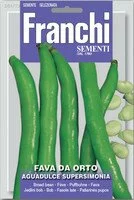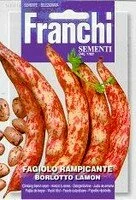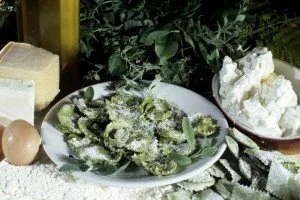
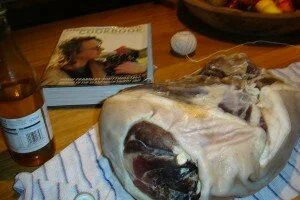
As I rinsed off the ham that I’d been salting ready for air-drying, I caught sight of the still vivid green chard leaves in the garden. Reminds me that there are some mixed Italian leaves that I grew for salad that may be a bit large and on the bitter side now for salad, but could be great wilted with chard and mixed with parmesan and ricotta for a ravioli filling.
A lot of my favourite recipes stem from the ‘Cucina Povera’ tradition and what with the salami hanging over my head as I go to collect logs for the woodburner from the covered porch, I’m starting to feel quite like an Italian peasant.
Then a glance at the tub of ricotta reminds me how excited I was this summer when a Waitrose opened 15 minutes away. Well, it used to be a long drive to get to any supermarket. Now I can buy parmesan and ricotta without losing a couple of hours of precious time. Okay, I feel a fraud.
I also feel very lucky that these days we’re able to dip into the ‘Cucina Povera’ traditions of so many cultures. This way of rustling up tasty, nutritious meals from whatever modest offerings nature offers has resulted in so many of my favourite dishes. From Ligurian pasta fillings to Indian curries (from whatever our garden offers), Moroccan tajines, Asian noodles and Spanish rice dishes.
What with the greens and the prosciutto style air-dried ham I’m attempting it’s the Ligurian recipes I’m thinking of at the moment. One of my favourite areas of Italy, Liguria is a rugged strip of land wedged between mountains and sea. Partly because the terrain makes large-scale farming difficult, Ligurians are incredibly resourceful at making the most of the local vegetation. There are few flat plains for growing grain or rearing livestock and the fertile valley bottoms tend to be used for the cultivation of flowers that give the Riviera dei Fiori its name. So the Ligurians have become adept at growing delicious food in their ortos (small areas of land, often just outside their villages) and supplementing it with wild food.
This preoccupation is part of the “di magro” cooking tradition, a way of rustling up tasty, nutritious results from whatever modest offerings nature offers and it evolved during times of poverty. Of course, with a lot more sunny weather to help their ortos along than us British gardeners are used to, nature’s offerings are hardly meagre. Try nutritious home-grown and wild greens in a Torta Verde, as a filling for Pansotti con Preboggion (“big belly” pasta) or mixed with ricotta for ravioli di magro, and you’d have to agree it’s a good thing that the “di magro” tradition has persisted in more prosperous times.
My garden may not exactly be a sun-drenched orto, in fact it looks pretty bare at the moment. Yet the number of family meals that it provides still amazes me. I’m starting to get excited thinking about next year’s planting already and wondering what will go with the air-dried ham that should be ready in 6 months or so. I’ve protected my globe artichokes with fleece and mulch this year, hoping they’ll make it through. And young broad beans should go well with my chorizo and prosciutto style ham, I must plant lots.
With all this Italian inspiration, couldn’t resist browsing Franchi seeds. Their broad bean seeds come with a reminder of Pasta con fave and have me dreaming of broad bean pasta with plenty of parmesan, parsley, maybe mint and slivers of my ham. These borlotti pods look so beautiful too don’t they.
This is how I’ve attempted to cure the ham so far, will keep you posted. All my meat curing so far has mainly been based on Hugh Fearnley Whittingstall’s The River Cottage Cookbook, internet research and advice from Alex at Flora’s Posts.
Air-dried Ham (Proscuitto style – I hope!)
Preparing the ham – I used one leg of very free-range (they rooted around a big area of our garden) Berkshire pig. Luckily our nearest butcher, in Mickleton, was able to tunnel bone the leg. This means you can put salt easily inside the ham (reducing the risk of it going rotten) without having the hassle of sewing it up. Apparently tunnel-boning is a very skilled task, worth asking your butcher to do if you’re planning air-drying.
Salting – I took a large plastic storage container with a lid, then found another smaller plastic container that fitted inside standing on a block. We drilled holes in the smaller container for drainage then poured salt in a 2cm thick layer at the bottom of it. Having rubbed salt inside the ham, I placed it on the bed of salt and covered in more salt, so it was covered all over by about 2cm. A piece of wood went on top of the salt, then a weight. We put the lid on the larger container and left it in an unheated, cool room for the liquid to drain. Ours salted for about a month. basically you need to allow no fewer than 3 days per kilo and no more than 4 – 4 is safer but may result in a salty ham. I’m assuming the salty ham will be used sparingly for salty flavour anyway.
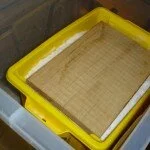
Hanging the ham – I washed off the salt, wiped it all over with a piece of muslin dipped in cider vinegar, then wrapped tightly in a double layer of muslin. It now has to hang in a cool, well-ventilated place for four to six months. Wind is good, but it must be protected from rain and hungry wild animals. Remembering the footprints in our garden last time we had snow, I’m very aware that once we go to bed, a wide variety of creatures appear to party around our house. So we made a protective cage, with a wooden lid but wire sides that will hopefully let the wind in but keep everything else out.
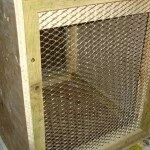
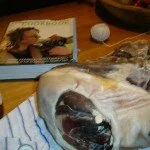


Will let you know in the Spring when I unwrap if I have a lovely prosciutto or a rotten mess. Fingers crossed.
photo of wild greens ravioli at the top is by Foto Archivio Agenzia in Liguria.


